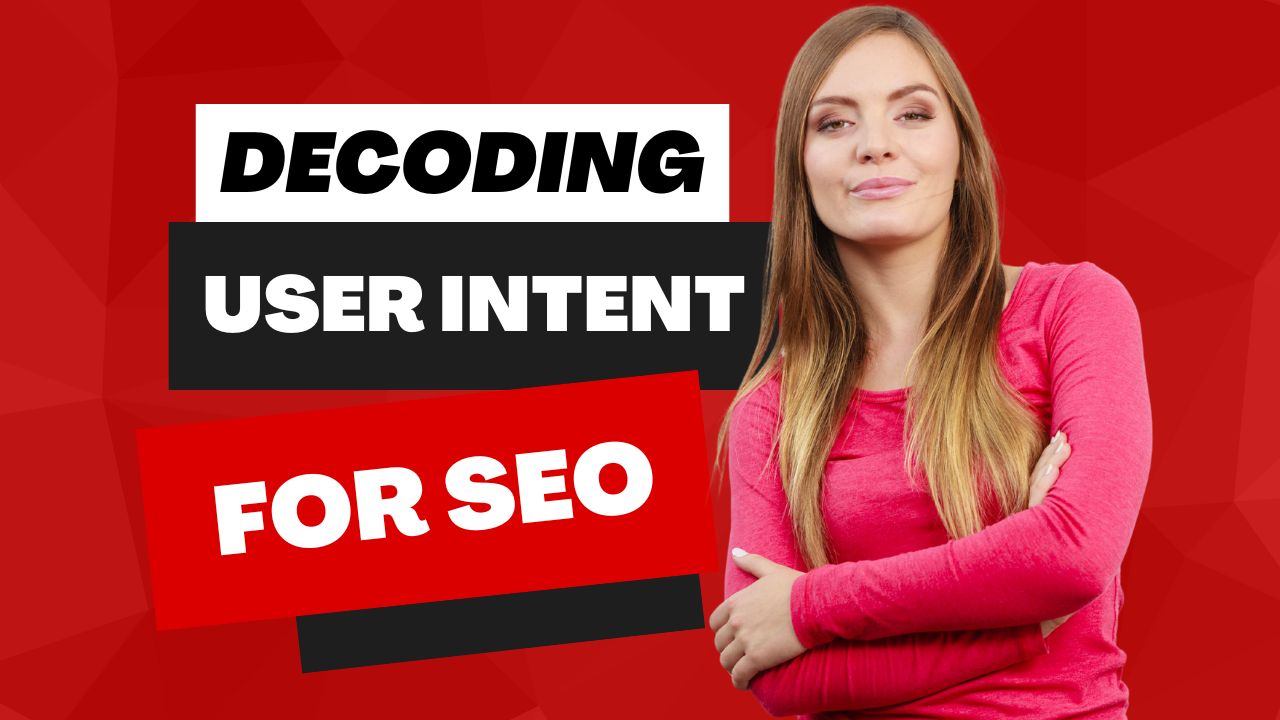Once upon a time in the digital world, SEO was a straightforward game ruled by keywords. Marketers and webmasters armed themselves with a plethora of keywords, weaving them into every nook and cranny of their websites, hoping to charm the search engines. It was a simpler era, where keyword density was king, and the mantra was clear: the more keywords, the merrier. But as with all great tales, change was inevitable.
Enter the era of user intent. As search engines evolved, becoming more sophisticated, they started focusing not just on what users were typing, but why they were typing it. This seismic shift brought user intent to the forefront, turning the SEO landscape into a more intricate and nuanced domain. Today, it’s no longer just about cramming keywords but understanding the searcher’s underlying purpose.
Our mission? To delve into this fascinating transformation. We’re setting out to explore how a deep grasp of user intent can revolutionise SEO tactics. It’s an exploration into aligning our strategies not just with algorithms, but with the real flesh-and-blood humans behind every search query. By unravelling the secrets of user intent, we aim to uncover how we can not only meet but exceed the expectations of both search engines and searchers. So, let’s embark on this journey together, turning pages to a new chapter in the world of SEO.
Types of user intents
Informational Intent
Informational Intent represents a significant portion of online search activities, where users seek knowledge, explanations, or answers to specific questions. This intent is characterised by queries that are primarily driven by the user’s desire for information, rather than an intention to make a purchase or locate a specific website. Common examples include queries beginning with “how to”, “what is”, “where can I find”, “when did”, and “why does”.
In the context of SEO, addressing Informational Intent is crucial for websites aiming to establish authority and credibility in their respective fields. Content that serves this intent should be meticulously crafted to provide comprehensive, accurate, and trustworthy information. This involves creating in-depth blog posts, detailed guides, educational articles, and instructional videos that not only answer users’ questions but also provide added context and depth to the topic at hand.
The key to successfully catering to Informational Intent lies in understanding the user’s need for reliable and accessible information. Websites that excel in meeting this need are more likely to attract and retain a knowledgeable audience, enhance their reputational strength, and improve their overall SEO performance. By focusing on quality content that addresses Informational Intent, websites can position themselves as authoritative sources in their niche, thereby fostering trust and engagement among their user base.
Navigational Intent
Navigational Intent refers to a specific type of user behaviour in search engine usage, where the primary goal is to locate a particular website or webpage. Unlike informational or transactional searches, users with navigational intent have a clear destination in mind and use search engines as a means to reach that destination efficiently. Typical examples of navigational queries include entering the name of a company, brand, service, or even specific online platforms and social media sites, such as “Facebook”, “YouTube”, or “BBC homepage”.
For SEO practitioners and website managers, understanding and accommodating navigational intent is essential. This is particularly relevant for well-known brands or services with a significant online presence. The objective in SEO for navigational queries is to ensure that the official site ranks prominently for these searches, providing direct and quick access for the user. This minimises the risk of potential visitors being diverted to other sites, such as third-party articles or competitor pages.
Content strategies for addressing navigational intent are notably different from those used for informational or transactional intents. The focus should be on reinforcing brand identity and ensuring that the official website is optimally indexed and easily recognisable in search results. This involves consistent branding, clear website architecture, and the use of structured data to enhance visibility in search engines.
Moreover, for organisations with multiple products, services, or sub-brands, it’s important to create a well-structured and easily navigable website. This allows users to find the specific section or page they are searching for with ease. Ensuring that the website appears as the top result for navigational queries directly related to the brand or organisation is a critical component of effective SEO strategy.
Effectively addressing navigational intent is a key aspect of SEO, particularly for well-established brands and organisations. It involves a focused approach to ensure that the official site ranks prominently for brand-specific searches, thereby facilitating direct access for users and reinforcing brand recognition.
Transactional Intent
Transactional Intent in the context of search engine usage is a distinct category of user behaviour focused on completing a specific action or transaction. This intent typically manifests in searches where the user’s primary objective is to make a purchase, sign up for a service, download a software or application, or engage in any other form of online transaction. Examples of transactional queries include terms like “buy iPhone online”, “book flight to Paris”, or “download Adobe Photoshop trial”.
From an SEO perspective, addressing transactional intent is crucial for businesses and e-commerce websites aiming to convert visitors into customers. The strategy here revolves around optimising web pages not only to rank well in search results but also to facilitate and encourage the completion of transactions. This involves a deep understanding of the user’s transactional needs and creating content that guides them towards making a purchasing decision.
Key elements in optimising for transactional intent include clear and compelling product descriptions, easy-to-navigate e-commerce interfaces, and strong calls-to-action (CTAs). The website should be optimised for conversions, ensuring a seamless and intuitive user journey from the landing page to the checkout process. Additionally, including customer reviews, ratings, and trust signals can significantly enhance the effectiveness of pages designed for transactional intent.
Moreover, ensuring that these transaction-oriented pages are indexed correctly and appear for relevant searches is vital. This includes utilising targeted keywords that align with transactional queries and implementing structured data to enhance product visibility in search results.
Commercial Intent
Commercial Intent in search engine queries represents a critical category of user behaviour, particularly for businesses and marketers focusing on SEO. It encompasses searches where the user’s goal is to research potential purchases or services before making a final buying decision. These searches are indicative of a user who is in the consideration phase of the buying process, actively seeking information to compare products, read reviews, and evaluate the best options available. Typical examples of commercial intent queries include “best smartphones 2023”, “top-rated dishwashers”, or “Adobe Photoshop vs. GIMP comparison”.
For SEO professionals and digital marketers, effectively targeting commercial intent is key to influencing purchasing decisions and guiding potential customers through the sales funnel. This involves creating content that caters to users looking to compare products, understand features, and read evaluations or testimonials. The aim is to provide comprehensive and persuasive information that positions a product or service as the optimal choice.
Content strategies to address commercial intent must focus on creating detailed comparison guides, informative reviews, and educational articles that highlight product benefits, unique selling propositions, and competitive advantages. This content should be designed to answer specific queries related to product comparisons, benefits, and user reviews, thereby aiding the user in making an informed purchase decision.
Moreover, ensuring high visibility for these types of content in search engine results is essential. This requires optimising for keywords that reflect commercial intent, using structured data to improve the display of product information in search results, and implementing SEO best practices to enhance overall search ranking.
Targeting commercial intent in SEO involves a strategic approach to content creation and optimisation. The objective is to engage users who are evaluating options before a purchase, providing them with the necessary information to make informed decisions. By effectively addressing commercial intent, businesses can significantly influence buyer behaviour, steering potential customers towards their products or services at a crucial stage in the buying process.
In Summary
A nuanced understanding of user intents – informational, navigational, transactional, and commercial – is critical for crafting effective digital strategies. Each intent represents a distinct pathway in the user’s online search journey, demanding tailored content and optimisation approaches.
Informational intent users seek knowledge, approaching search engines with questions and curiosities. SEO strategies here should focus on creating authoritative, informative content that comprehensively addresses these queries. For navigational intent, where users aim to locate a specific website or page, the goal is to ensure that the brand or site is the most prominent and accessible result, reinforcing brand visibility and ease of access.
Transactional intent users are action-oriented, ready to make purchases or engage with services. Optimising for this intent involves streamlining the user journey towards conversion with clear calls-to-action and persuasive content. Meanwhile, commercial intent users, in the consideration phase of their buying process, require content that provides detailed product comparisons, unbiased reviews, and compelling reasons to guide their purchase decisions.
Overall, understanding and strategically addressing these varied user intents can significantly boost SEO effectiveness. This approach not only attracts a broader audience but also meets their specific search needs, fostering engagement, trust, and conversions.






